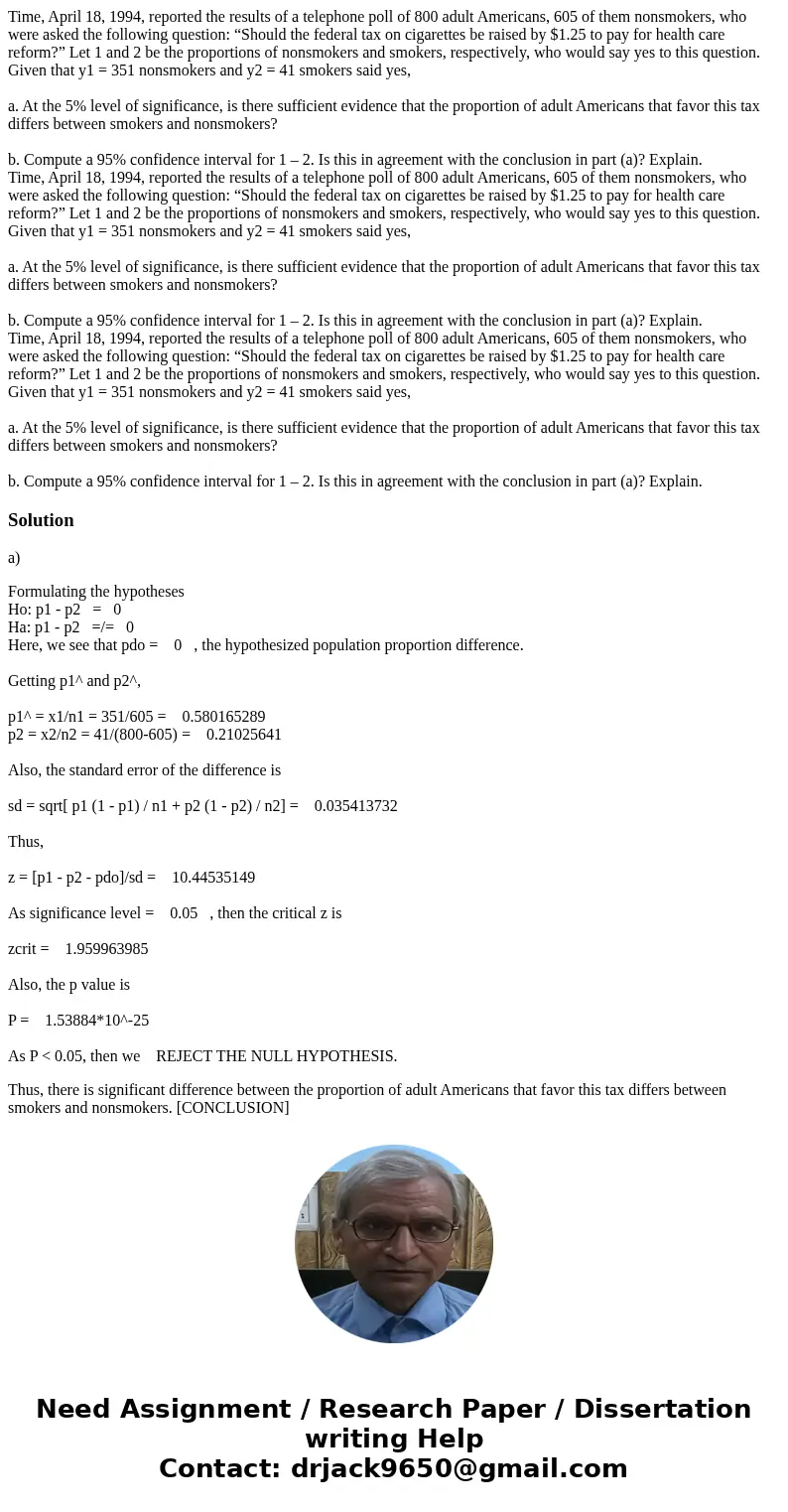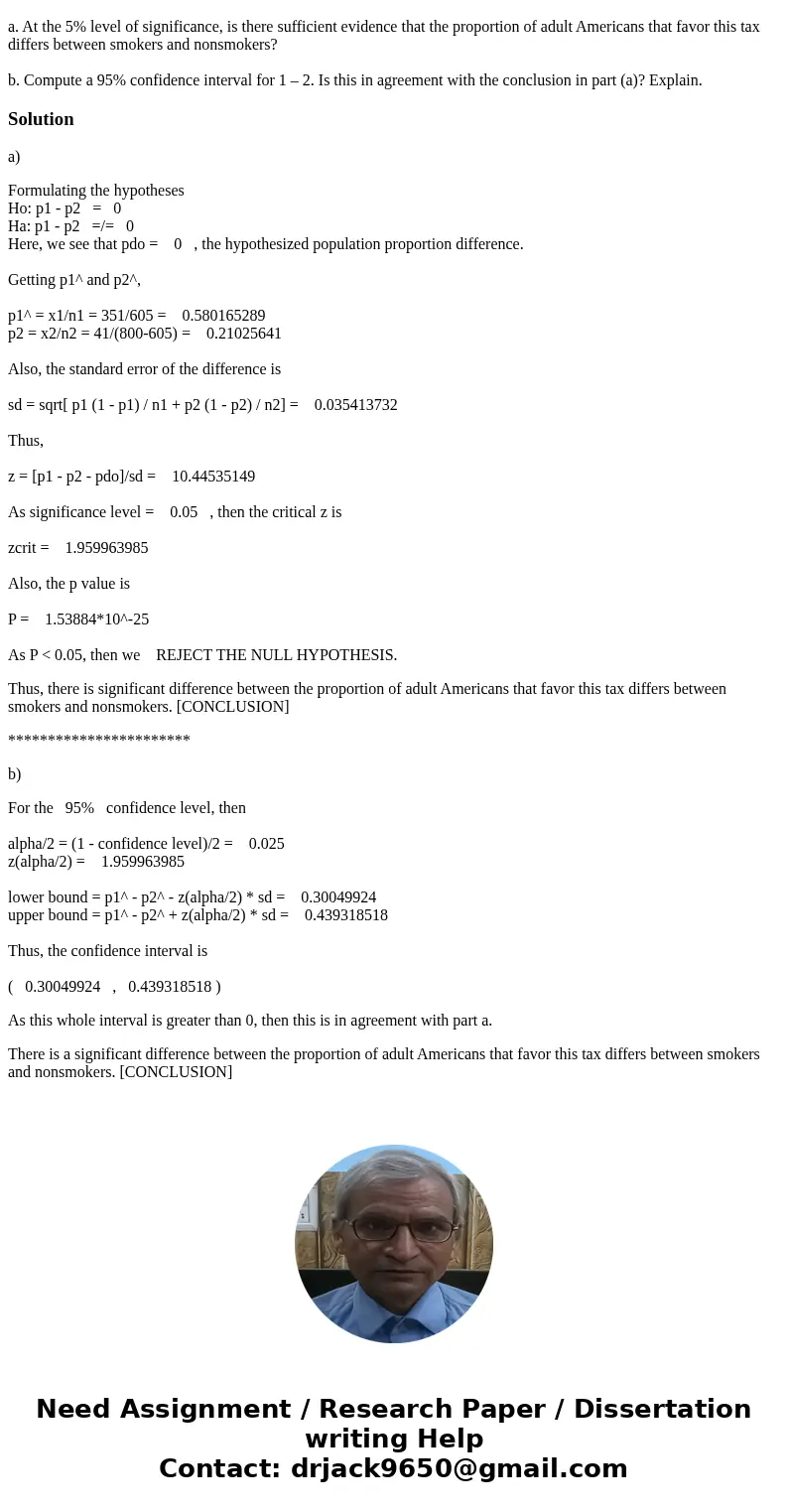Time April 18 1994 reported the results of a telephone poll
Solution
a)
Formulating the hypotheses
Ho: p1 - p2 = 0
Ha: p1 - p2 =/= 0
Here, we see that pdo = 0 , the hypothesized population proportion difference.
Getting p1^ and p2^,
p1^ = x1/n1 = 351/605 = 0.580165289
p2 = x2/n2 = 41/(800-605) = 0.21025641
Also, the standard error of the difference is
sd = sqrt[ p1 (1 - p1) / n1 + p2 (1 - p2) / n2] = 0.035413732
Thus,
z = [p1 - p2 - pdo]/sd = 10.44535149
As significance level = 0.05 , then the critical z is
zcrit = 1.959963985
Also, the p value is
P = 1.53884*10^-25
As P < 0.05, then we REJECT THE NULL HYPOTHESIS.
Thus, there is significant difference between the proportion of adult Americans that favor this tax differs between smokers and nonsmokers. [CONCLUSION]
***********************
b)
For the 95% confidence level, then
alpha/2 = (1 - confidence level)/2 = 0.025
z(alpha/2) = 1.959963985
lower bound = p1^ - p2^ - z(alpha/2) * sd = 0.30049924
upper bound = p1^ - p2^ + z(alpha/2) * sd = 0.439318518
Thus, the confidence interval is
( 0.30049924 , 0.439318518 )
As this whole interval is greater than 0, then this is in agreement with part a.
There is a significant difference between the proportion of adult Americans that favor this tax differs between smokers and nonsmokers. [CONCLUSION]


 Homework Sourse
Homework Sourse